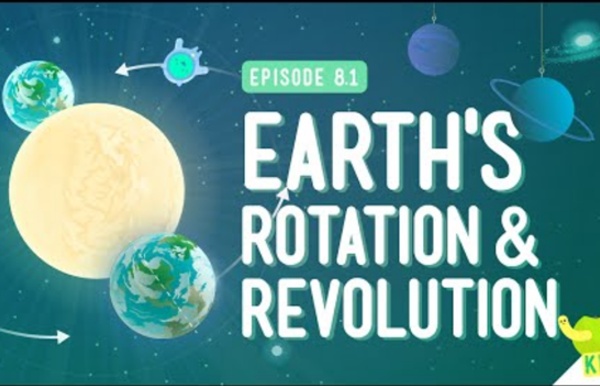



Curious Kids: What makes the Earth spin on its axis every day? This is an article from Curious Kids, a series for children. The Conversation is asking kids to send in questions they’d like an expert to answer. All questions are welcome – serious, weird or wacky! What makes the Earth spin on its axis every day? – Reid, age 5, Melbourne. To answer this tricky question, we have to look back in time to when the Earth was born, 4.5 billion years ago. When our solar system formed out of a gas cloud, called a nebula, there was lots of dust and gas coming together due to the force of gravity. Read more: Curious Kids: Why do our ears pop? How the spin sped up When you make a spinning object more compact, it spins faster. So when all of the rocks in the clump of dust and gas started coming together, that made the Earth’s spin speed up. We’ve covered what made the Earth start spinning, and what made it pick up speed. Why the spin continues In theory, a spinning object will just keep spinning forever unless you add energy or take it away. Imagine a spinning top.
What's Orbital Debris? Most orbital debris is in low Earth orbit, where the space station flies. Credits: NASA Experiments like the Long Duration Exposure Facility have helped scientists learn more about orbital debris. Multiple layers of material in a spacesuit protect astronauts from being hurt by orbital debris impacts while on spacewalks. This article is part of the NASA Knows! Orbital debris (duh BREE) is "junk" that is circling Earth. How Big Is Orbital Debris? Why Is Orbital Debris Important? How Much Debris Is in Orbit? To determine how many pieces of very small debris - smaller than 1 millimeter - are in orbit, scientists study the space shuttle when it returns from orbit. NASA also has performed experiments in space to learn more about orbital debris. How Do Astronauts Stay Safe From Orbital Debris? Spacesuits also help protect crew members from orbital debris and micrometeoroids when the astronauts are outside the space station. What Is NASA Doing About Orbital Debris? Words to Know
Earth Rotation and Orbit Diagram What Is an Eclipse? When Earth passes directly between the sun and the moon, a lunar eclipse takes place. Credits: NASA During a solar eclipse, the moon casts two shadows. One is called the umbra; the other is called the penumbra. An eclipse takes place when Earth or the moon passes through a shadow. This article is part of the NASA Knows! An eclipse takes place when one heavenly body such as a moon or planet moves into the shadow of another heavenly body. What Is a Lunar Eclipse? A lunar eclipse can be seen from Earth at night. A total lunar eclipse occurs when the moon and the sun are on exact opposite sides of Earth. A partial lunar eclipse happens when only a part of the moon enters Earth's shadow. A lunar eclipse usually lasts for a few hours. What Is a Solar Eclipse? There are three types of solar eclipses. The first is a total solar eclipse. The second type of solar eclipse is a partial solar eclipse. The third type is an annular (ANN you ler) solar eclipse. Solar eclipses happen once every 18 months.
Solar System Facts *Note that in the image above the sizes are to scale, but the relative distances are not. The solar system includes the Sun and all the objects that orbit around it due to its gravity. This includes things such as planets, comets, asteroids, meteoroids and moons. The Solar System formed around 4.6 billion years ago. 10 Facts about Space! We’re off on an adventure out of this world to discover ten stellar facts about space! 1) One million Earths could fit inside the sun – and the sun is considered an average-size star. 2) For years it was believed that Earth was the only planet in our solar system with liquid water. More recently, NASA revealed its strongest evidence yet that there is intermittent running water on Mars, too! 3) Comets are leftovers from the creation of our solar system about 4.5 billion years ago – they consist of sand, ice and carbon dioxide. 4) You wouldn’t be able to walk on Jupiter, Saturn, Uranus or Neptune because they have no solid surface! 5) If you could fly a plane to Pluto, the trip would take more than 800 years! 6) Space junk is any human-made object orbiting Earth that no longer serves a useful purpose. 7) An asteroid about the size of a car enters Earth’s atmosphere roughly once a year – but it burns up before it reaches us. 8) The highest mountain known to man is on an asteroid called Vesta.